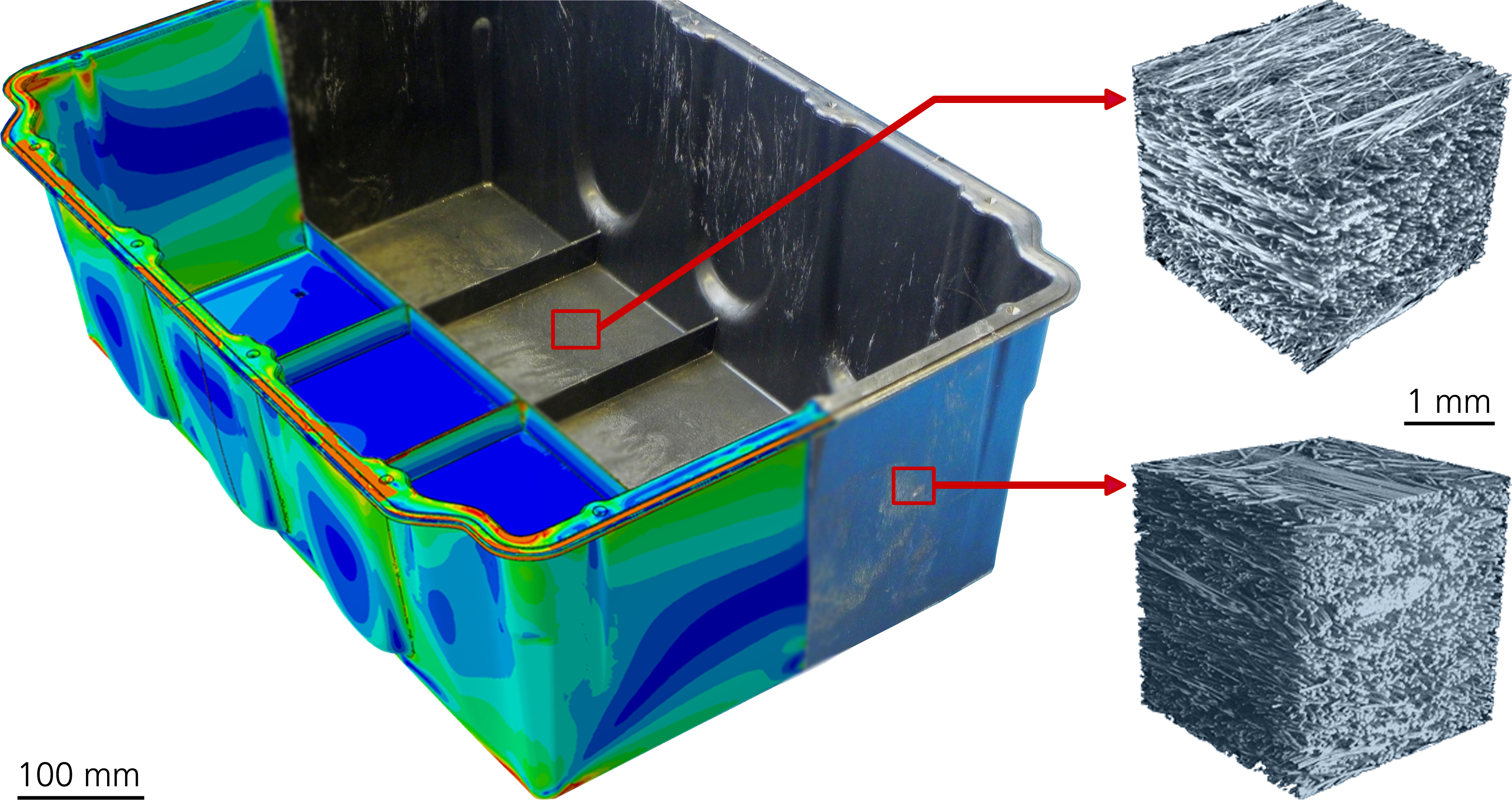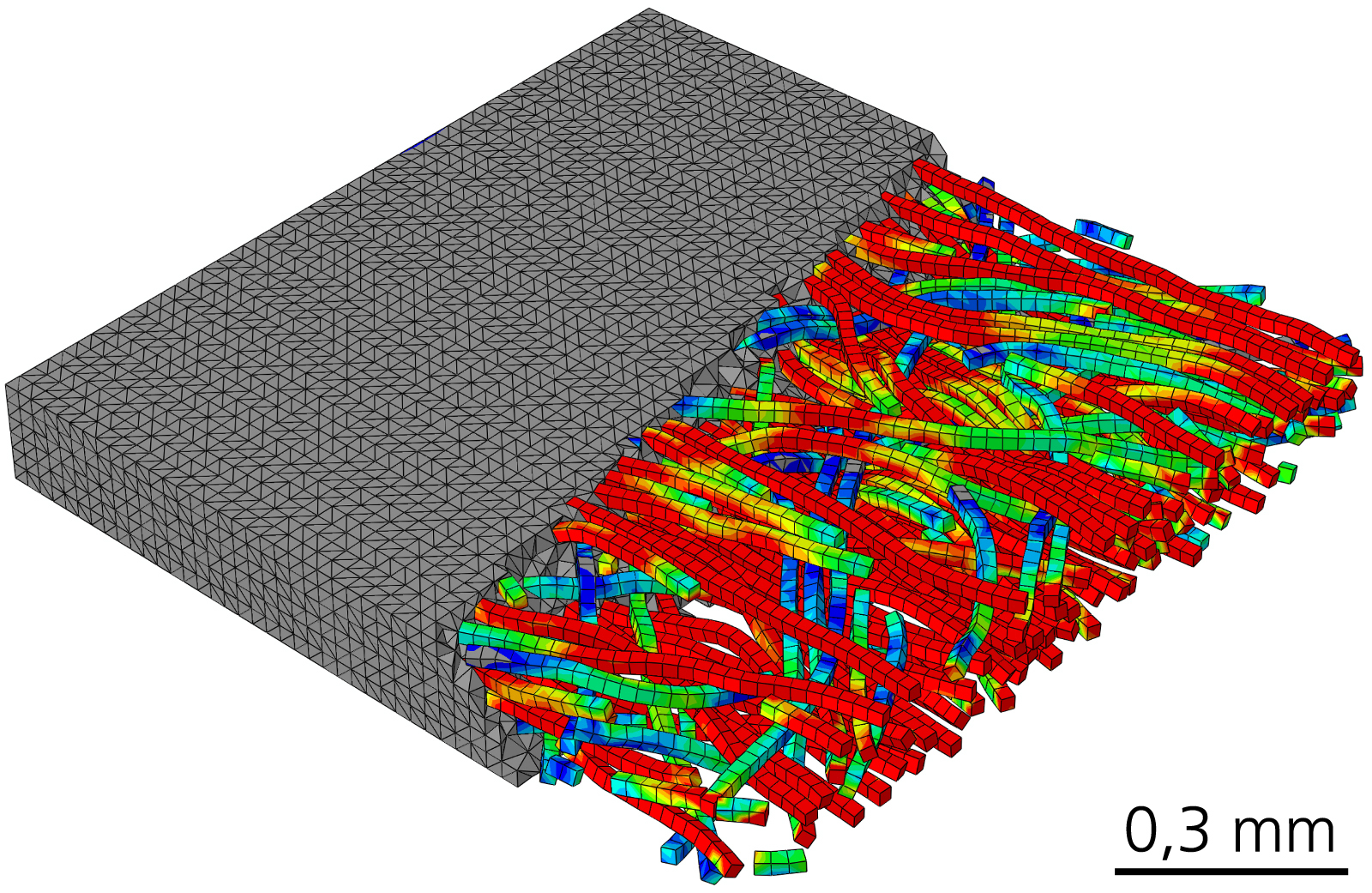New microstructural model for long fiber reinforced thermoplastics (LFTs)
(November 10, 2016) The automotive industry uses long fiber reinforced thermoplastics (LFTs) when manufacturing lightweight structural parts such as bumper brackets or door modules. Accurate simulation methods are needed to exploit their maximum lightweight potential. Therefore, the material’s microstructure needs to be considered. In this respect, however, existing simulation methods currently take into account significant simplifications. With his new model, Dr. Sascha Fliegener from the Fraunhofer Institute for Mechanics of Materials IWM has made a considerable step towards a realistic representation of the microstructure. Manufacturers of parts and materials can use his model to precisely predict mechanical behavior based on the geometry of the microstructure.
Long fiber reinforced thermoplastics (LFTs) are well suited for lightweight structural parts: They have a high specific strength and can be mass produced in a cost-efficient manner. In a compounding procedure, an extrudate is formed by mixing the thermoplastic polymer with glass or carbon fibers with a maximum length of up to 10 centimeters. The heated bulk material is pressed between two molds or injected into a closed mold. During this process, the fibers are oriented according to the state of flow within the mold. This results in different regions having vastly different microstructures and quite different material properties which need to be accounted for when structurally simulating the parts. So far, to perform these simulations, automotive suppliers use mostly classical analytical methods for short fiber composites. Such methods consider significant simplifications for the interaction between the fibers. However, fiber interactions are particularly pronounced for LFTs due to the extended length and high volume fraction of the fibers. One must account for these interactions to precisely predict the material behavior and damage mechanisms within the microstructure. “My microstructural model is an important step towards including these interactions” explains Fliegener, researcher in the Composite Materials Group at Fraunhofer IWM.

Realistic representation of the microstructure
Using his new microstructural model, Sascha Fliegener is able to reconstruct the fiber structure at any region of a LFT part based on microstructural information, such as fiber orientation, fiber length and volume fraction. “Now we are able to predict the mechanical response of the material including the complex damage mechanisms under increasing load” Fliegener says. The damage mechanisms at the microscale cannot be observed in experiments. Applying micromechanical simulations helps to visualize how mechanical stresses are transferred from the matrix to the fibers until the critical fiber strength is breached and the material fails.
Virtual experiments to predict mechanical behavior
Based on microstructural data of a specific region within the component, it is possible to generate virtual material samples, which can be used to model different mechanical properties such as elasticity, strength or creep. Fliegener can also perform virtual experiments which allow for the realization of multiaxial stress states as well as the loading of materials in out-of-plane directions. While real experiments are hardly feasibly in these cases, automotive suppliers can use micromechanical simulations to calibrate their material models with better accuracy since they complement the experimental database and thus help to increase the precision of structural simulations of the parts.
For his PhD dissertation »Micromechanical finite element modeling of long fiber reinforced thermoplastics« Fliegener was awarded the »Werkstoffmechanikpreis 2016« (Mechanics of Materials Award). The award of 3 000 Euros is sponsored by KSPG AG, a renowned supplier of automotive components and is presented annually by the board of trustees of the Fraunhofer IWM for outstanding scientific contributions in the field of mechanics of materials.
Text box
Long fiber reinforced thermoplastics (LFTs) fill the gap between short fiber reinforced plastics and classical continuous fiber materials. They are very strong and impact resistant and can be efficiently mass produced by injection or compression molding. The automobile industry uses LFTs for front end structures, bumper mounts, seat shells, belt pulleys, support elements and door modules, among other things. Furthermore, the material is used for textile machine parts, bicycle components, boat parts, as well as ski and snowboard bindings. LFTs can easily be recycled be re-melting the thermoplastic matrix similar to metallic materials. The recycled material can be added during the compounding procedure to manufacture new parts.
Contact
Dr. Jörg Hohe
Phone +49 761 5142-340
Send E-mail
 Fraunhofer Institute for Mechanics of Materials IWM
Fraunhofer Institute for Mechanics of Materials IWM